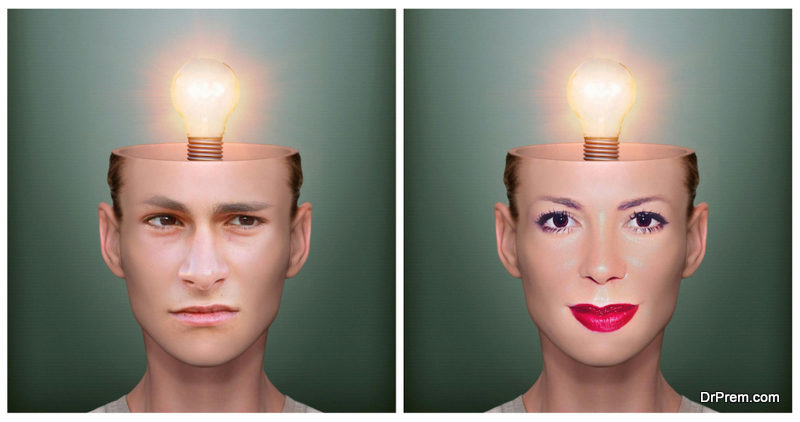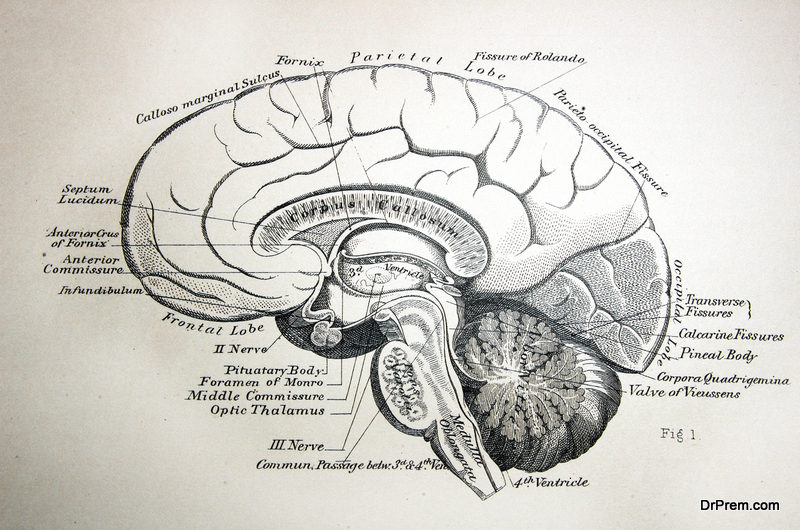Studies related to sex-based variations in men’s and women’s brains are conducted not to establish superiority of one gender over another. Understanding behavioral differences of men and women related to breeding, aggression and parenting is essential as these are important for propagation and survival of the human race, says Nirao Shah,the professor of psychiatry and behavioral sciences and neurology at Stanford University.
These traits are not acquired from surroundings, rather they are inborn. The circuitry of thought process and behavioral aspects are unique to a specific sex type. They are deep rooted in the brain.
According to Halpern, a professor of psychology at Claremont Mc Kenna College, behavioral contrasts in males and females are essentially linked with differences in the structure of their brains. These differences are far from social and learning factors impacting them. There are more of biological reasons that have an effect on behavior in men and women.
Experiments attest to biological factors involved in contrasting behavioral patterns:
 Experiments with monkeys on sex-based differences in matters of preference and resulting inferences are quite analogous to human sex-based behavioral differences. All the 34 rhesus monkeys chosen for a study were given a toy of their preference. Males liked toys with wheels and females went for ritzy ones.
Experiments with monkeys on sex-based differences in matters of preference and resulting inferences are quite analogous to human sex-based behavioral differences. All the 34 rhesus monkeys chosen for a study were given a toy of their preference. Males liked toys with wheels and females went for ritzy ones.
Now don’t tell their parents induced the unique likings. Neither does the primate society have any idea on toys or a mind to buy one for their offspring. This is a clear case of biological makeup of their brain structure which is innately different for males and females.
Men’s and women’s brains are different too not only in the basic structure; the difference in size is also a contributing factor for unique responses to external and internal stimulus. From a very tender age of 9 to 17 months, a human baby starts recognizing his own sex and sex of other babies in the vicinity. Typically, preferences for toys and other likeable items are guided by the sex the baby belongs to.
How do men’s and women’s brains differ in size and behavior?
 According to Larry Cahill, PhD, professor of Neurology and Behavior at the University of California Irvine, human brain is a sex-typed organ. Perceptible cellular variance in neural makeup and related physiological contrasts in functional areas are apparent.
According to Larry Cahill, PhD, professor of Neurology and Behavior at the University of California Irvine, human brain is a sex-typed organ. Perceptible cellular variance in neural makeup and related physiological contrasts in functional areas are apparent.
Brain imaging researches lead to the conclusion that these variations in men’s and women’s brains are not just confined to the reproductive orbit. Thedifference in size of the brain is an established fact, the men’s being larger.
If we go for size adjustment, a women’s hippocampus designed to learning and reminiscence is larger than men’s. They function in a different manner as well. By contrast, men’s amygdala responsible for experiencing emotions and reflection on such encounters is larger than that of women.
Consequently, this difference in basic structure has a profound effect on behavior and attitude displayed by men and women differently. A biologically different brain will have its own presence felt as manifested in difference in reactions shown by both the sexes towards a given environment.
Here are some illustrations:
- Women have higher potential for powerful and graphic recollections of emotional episodes.
- Women do better than men in verbal abilities and articulations.
- On average, women’s discernment of texts and writing capabilities outsmart those delivered by men.
- Women are better at fine motor coordination. In workplaces involving high-precision job like laying delicate electrical circuits, women workforce is preferred.
- Men are better at visuospacial adeptness. While women rely more on landmarks (a subconscious attachment to security), men are more inclined to evaluate status by direction, time and distance traversed. They are more at home when coming to solving an issue in a three dimensional space.
- Women turn more obsessed with looks as they approach adulthood while men are more focused on material aspects of life.
- Women are more likely to get into a fit of clinical depression almost double the chance a man would experience.
Reasons for difference in men’s and women’s brains:
 A primary reason for brain difference in both the sexes arises out of sexual hormonal drives throughout the life. In women, this is Estrogen and Progesterone and in men, this is Testosterone and Androgen.
A primary reason for brain difference in both the sexes arises out of sexual hormonal drives throughout the life. In women, this is Estrogen and Progesterone and in men, this is Testosterone and Androgen.
More significantly, males, as they evolve through growth phase, get a rush of testosterone. That not only gives a permanent formation to their body parts but also to their brains.Normally, biologically different male and female brains are veered off to accommodate high levels of acceptance for sex hormones.
Another biological factor that determines the inherent difference between men’s and women’s brain is the composition of male and female chromosomes. Out of 23 pairs of chromosomes in each cells, females have 2 X chromosomes in each pair and males have one X and one Y chromosomes.
Studies have proved that sex-based deference in brain make up is an outcome of chemistry involved in hormone – receptor interplay. They influence your genetic material that varies from person to person. Role of XX chromosomes vs. XY chromosomes act as a significant determinant in this area.
Social factors:
 Men’s and women’s brains have been known to react differently to social signals. Experiments suggest women are better at evaluation of threat and they are more suspicious, emotional and masochistic.
Men’s and women’s brains have been known to react differently to social signals. Experiments suggest women are better at evaluation of threat and they are more suspicious, emotional and masochistic.
Even in patterns of cooperation between different sex combinations like male-male, female -female and male-female, same sex pairs outperformed opposite sex pairs. Studies also suggest variation in activation mapping in neural networks of both the sexes. These essentially boil down to different behavioral responses being tightly wired to men’s and women’s brains.
Physical factors:
 Understanding the difference between male and female brains may go a long way in assessing their clinical conditions and the required treatments. Women are more likely to suffer from depression and chronic anxiety as they produce nearly half of the serotonin produced by men.
Understanding the difference between male and female brains may go a long way in assessing their clinical conditions and the required treatments. Women are more likely to suffer from depression and chronic anxiety as they produce nearly half of the serotonin produced by men.
Men, on the other hand, are prone to suffer from autism, dyslexia and schizophrenia. In fact, schizophrenia and Alzheimer’s disease in men and women may show up differently. Even brain injuries affect differently in men and women based on the location of neurons.
Does the difference in brain structure decide capabilities?
 Difference exists in the ratio of grey matter to white matter. Women have a higher ratio but men possess 6.5 times more of grey matter in areas where intelligence resides. Women have 9 times as much of white matter.
Difference exists in the ratio of grey matter to white matter. Women have a higher ratio but men possess 6.5 times more of grey matter in areas where intelligence resides. Women have 9 times as much of white matter.
A fundamental contrast between the two sexes is in the frontal lobe responsible for long term strategies, decision-making and self restraint. However, the difference in men’s and women’s brains doesn’t have a bearing on intelligence quotient. Men use more of grey matter and women white. However, for a common task both may engage different compartments of the brain.
When asked to pronounce different words, both the sexes performed at par. Men used the left hemisphere while women used both the sides. It only proves there is more than one way to achieving results using different sections of the brain.
Biology of brain or culture – what matters most?
 Both have significant contribution. The chemical constituents of brain have great effect on behavior of men and women but the role of society in shaping the person cannot be ignored. In the process, many neurons and synapses might get pruned since the brain thinks it is unnecessary. This is likely to contribute a lot in developing the mindset of a person.
Both have significant contribution. The chemical constituents of brain have great effect on behavior of men and women but the role of society in shaping the person cannot be ignored. In the process, many neurons and synapses might get pruned since the brain thinks it is unnecessary. This is likely to contribute a lot in developing the mindset of a person.




